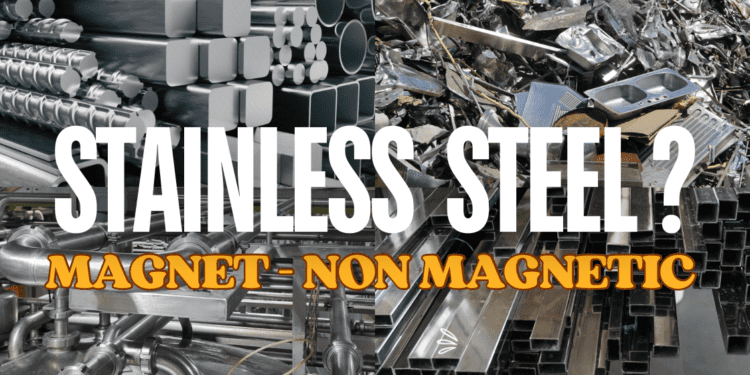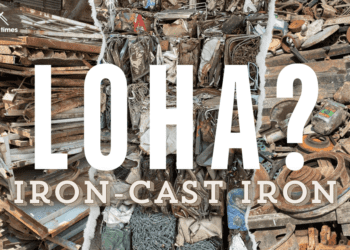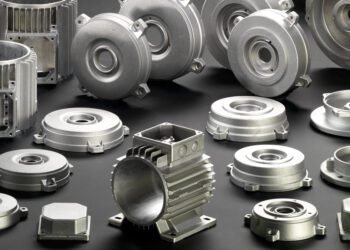What is Stainless Steel?
If you’ve ever wondered what stainless steel is and why it’s such a widely-used material, you’ve come to the right place. On my YouTube channel, I dive deep into the world of metals, including the fascinating properties and uses of stainless steel. In this article, I’ll give you a brief overview of stainless steel, and for more detailed explanations, make sure to check out my videos.
Join our: WhatsApp Channel
Understanding Stainless Steel
What exactly is stainless steel? It’s a type of metal alloy made primarily from iron, but it also contains other elements like chromium, nickel, and carbon. The addition of chromium (at least 10.5%) is what gives stainless steel its unique property — corrosion resistance. This means that unlike regular steel, stainless steel doesn’t rust when exposed to moisture or air, making it highly durable and long-lasting.
You might already know stainless steel from everyday items like kitchen appliances, utensils, or even the framework of buildings. But the truth is, stainless steel is a vital material in many industries — from construction to medical equipment.
Properties That Make Stainless Steel Special
Stainless steel has several qualities that make it stand out from other metals. these are some of the most important ones:
- Corrosion Resistance: Thanks to the chromium content, stainless steel forms a protective layer on its surface. This layer is what stops the metal from rusting when exposed to water, air, or even some chemicals.
- Strength and Durability: Stainless steel is strong, which makes it perfect for construction and manufacturing. It can handle heavy loads and withstand wear and tear over time without losing its structural integrity.
- Heat Resistance: Stainless steel can tolerate high temperatures, which is why it’s used in things like exhaust systems and industrial machinery that operate under intense heat.
- Aesthetic Appeal: Its shiny, reflective surface gives it a sleek and modern appearance, which is why it’s often used in architecture and home decor.
- Hygienic: It’s easy to clean and sanitize, making stainless steel a popular choice for medical tools, kitchen appliances, and food processing plants.
For a deeper dive into these properties, check out my YouTube videos where I explain them in detail, showing real-world examples of how stainless steel is used in different industries.
Click Here For Latest Scrap Metal Rates
Different Types of Stainless Steel
Did you know there are Different and multiple types of stainless steel? Each type is made for specific applications depending on the amount of chromium and other metals it contains. On my YouTube channel, I break down the three most common types:
- Austenitic Stainless Steel: This is the most common type of stainless steel, making up about 70% of production. It contains high levels of chromium and nickel, giving it excellent corrosion resistance and making it highly versatile. You’ll find it in everything from kitchen sinks to aircraft parts.
- Ferritic Stainless Steel: This type contains more iron and less nickel, making it less expensive but also less resistant to corrosion. It’s used for applications where strength and durability are more important than resistance to rust, such as in car exhaust systems.
- Martensitic Stainless Steel: This type is harder and stronger than the other two, thanks to its higher carbon content. It’s often used in things like surgical instruments and knives, where both strength and sharpness are essential.
Each type has its unique strengths and weaknesses, and I’ve gone into more detail in my videos if you’re interested in learning more about which stainless steel is best for specific jobs.
Related :Stainless Steel | Complete Details
Why Choose Stainless Steel?
Now that you know a bit more about what stainless steel is, you might be wondering, why is it so popular? Here are just a few reasons why industries around the world rely on stainless steel:
- Longevity: Stainless steel products last longer, which reduces replacement costs and makes it a sustainable material choice.
- Low Maintenance: Because it doesn’t rust or corrode easily, stainless steel requires little upkeep. This makes it a practical option for buildings, vehicles, and machinery.
- Recyclable: Stainless steel is fully recyclable, making it an environmentally friendly choice. In fact, a large percentage of stainless steel products are made from recycled materials.
- Safety: Its resistance to heat, corrosion, and harsh chemicals makes it a safer option for many industrial and medical applications.
By using stainless steel, companies and individuals alike can benefit from these features, making it a smart choice for a wide variety of purposes.
Learn More About Stainless Steel on My YouTube Channel
This article only scratches the surface of the incredible world of stainless steel. If you want to know more, I invite you to visit my YouTube channel, where I regularly post videos about different types of metals, including stainless steel. In my videos, I cover:
- How stainless steel is manufactured
- The differences between various stainless steel grades
- How stainless steel is used in industries like construction, healthcare, and manufacturing
- Tips for choosing the right stainless steel for your projects
FAQs:
1. What is stainless steel?
Stainless steel is a type of metal alloy made primarily of iron, chromium, and other elements, known for its resistance to rust and corrosion.
2. Why is stainless steel resistant to rust?
The chromium in stainless steel reacts with oxygen to form a protective layer that prevents rust and corrosion.
3. What are the common types of stainless steel?
The three most common types are austenitic, ferritic, and martensitic stainless steel, each with different properties and uses.
4. Where is stainless steel commonly used?
Stainless steel is used in kitchen appliances, medical equipment, construction, automotive parts, and more.
5. Is stainless steel recyclable?
Yes, stainless steel is 100% recyclable, and many stainless steel products are made from recycled materials.
6. Does stainless steel resist heat?
Yes, stainless steel is highly heat-resistant, making it suitable for industrial applications like exhaust systems and machinery.
7. How do I clean stainless steel?
Stainless steel is easy to clean with water, mild soap, or specialized stainless steel cleaners to maintain its shine and prevent stains.
8. Can stainless steel rust?
In extreme conditions or if the protective chromium layer is damaged, stainless steel can rust, but this is uncommon.
9.What are the benefits of using stainless steel?
Stainless steel offers durability, resistance to corrosion and heat, low maintenance, and a modern look, making it perfect for a wide range of industries.
10. Is stainless steel magnetic?
It depends on the type. Some stainless steels, like ferritic and martensitic, are magnetic, while austenitic stainless steel is not.
Conclusion
Stainless steel is an incredibly versatile, durable, and valuable material used in many industries. Its resistance to rust, strength, and aesthetic appeal make it a popular choice for a wide range of applications. For more detailed explanations and examples, head over to my YouTube channel, where I break down all these aspects in a clear and engaging way.
By watching my videos, you’ll not only gain a better understanding of stainless steel, but you’ll also learn about other types of metals and how they can be used in different fields. Don’t forget to subscribe to stay updated with all my latest content!





















